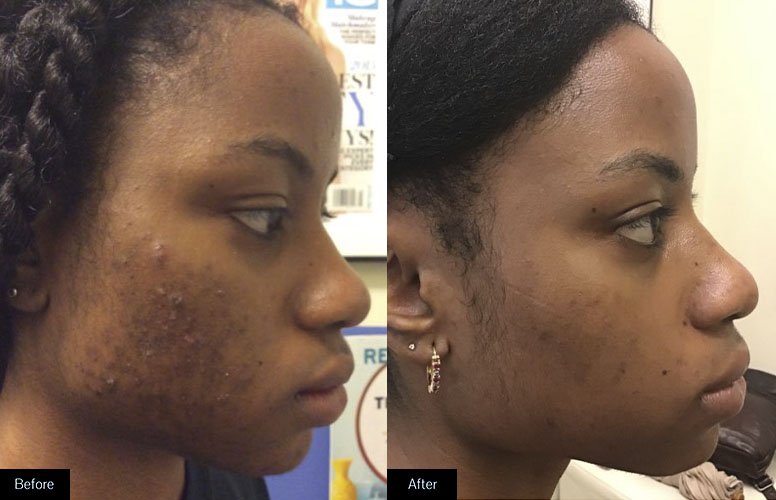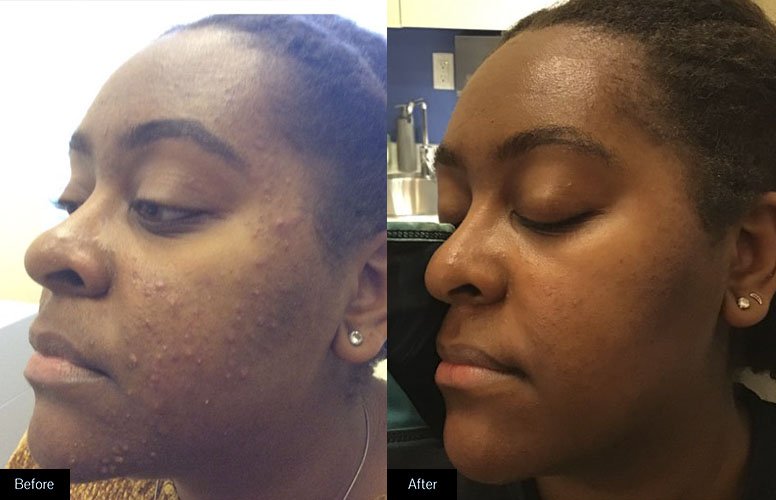
Acne Treatment
What is acne?
Acne is a skin condition that occurs when your hair follicles become clogged with oil, dead skin and inflammatory cells, which cause whiteheads, blackheads or cystic bumps. Although more common in teenagers, acne can affect all age groups. Depending on its severity, acne can cause emotional distress, dark spots, and scarring of the skin.


Images from Ingleton Dermatology P.C.
Treatment Options
-
This procedure utilizes the application of a chemical solution to encourage the sloughing of the top layers of skin to encourage skin renewal. Chemical peels are used to treat acne, dark spots, and acne scarring.
-
Drugs that contain vitamin A derivatives like retinoic acids or tretinoin and isotretinoin are often useful for the treatment of acne. These come as creams, gels, lotions, and tablets.
-
These work by destroying the acne-causing bacteria, and reducing redness and inflammation. Antibiotics are often combined with other topical agents to achieve optimal results.
-
BLU-U is a unique blue light that kills the acne-causing P. acnes bacteria in your skin. During each treatment, you sit with your face close to the blue light for approximately 17 minutes. The treatment is repeated once or twice weekly for about six weeks. After several weeks, the blue light can help control your acne.
The blue light can be used alone or in combination with a sensitizer called Levulan which is first applied to the skin (PhotoDynamic Therapy).
-
Your practitioner may use special tools to gently remove impacted whiteheads and blackheads (comedones) or cysts.
-
Nodular and cystic lesions can be treated by injecting a low-dose steroid into the lesion. This therapy can result in rapid improvement of the size, color and pain of the lesion within 24 hours.
Pair Your Treatment
The ROSE Ingleton MD Blemish Control Booster helps fight breakouts for clear, healthy-looking skin. Featuring the power of AHAs, niacinamide, and turmeric to calm and address blemishes. The Jamaican SuperFruit Blend with gentle fruit acids along with glycolic acid, lactic acid, and malic acid help to clear congestion and amp up surface turnover.

